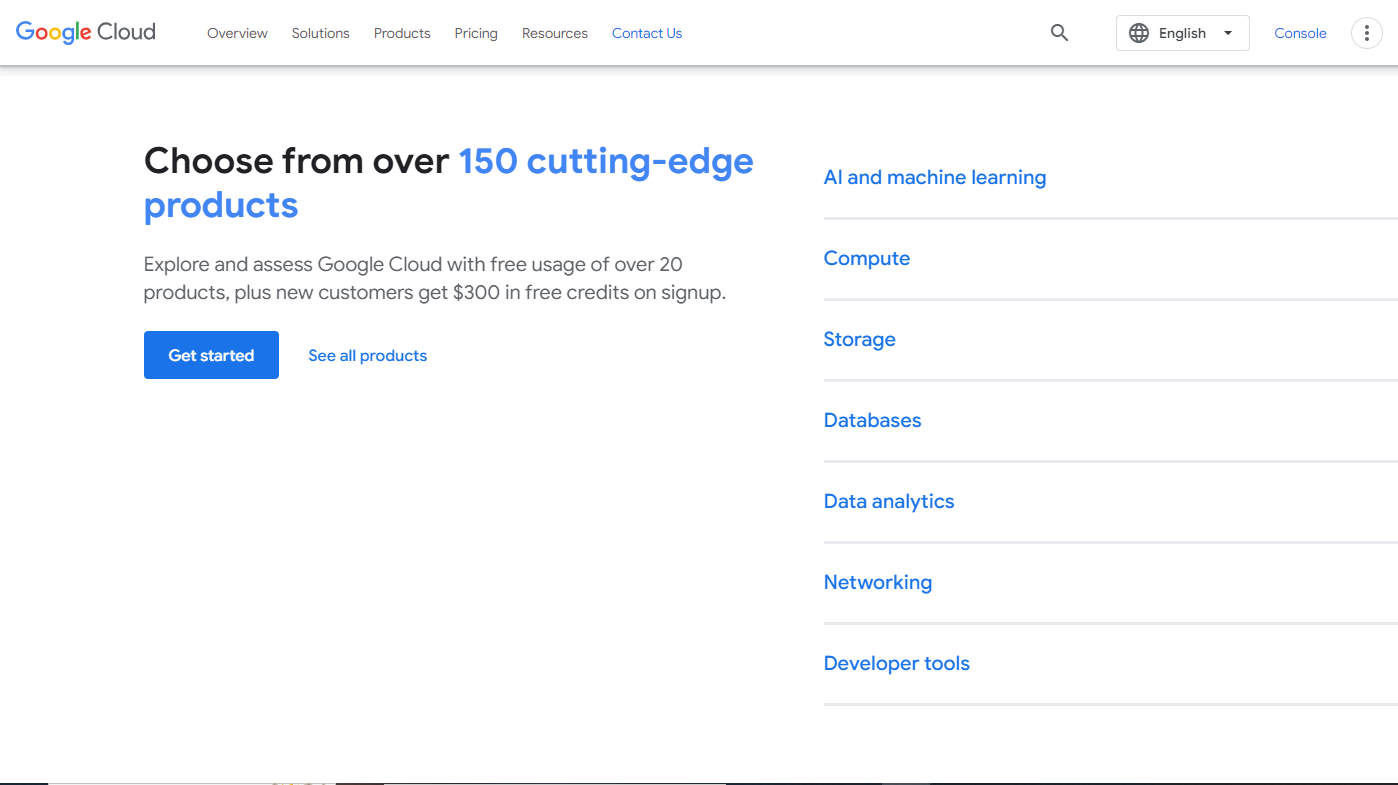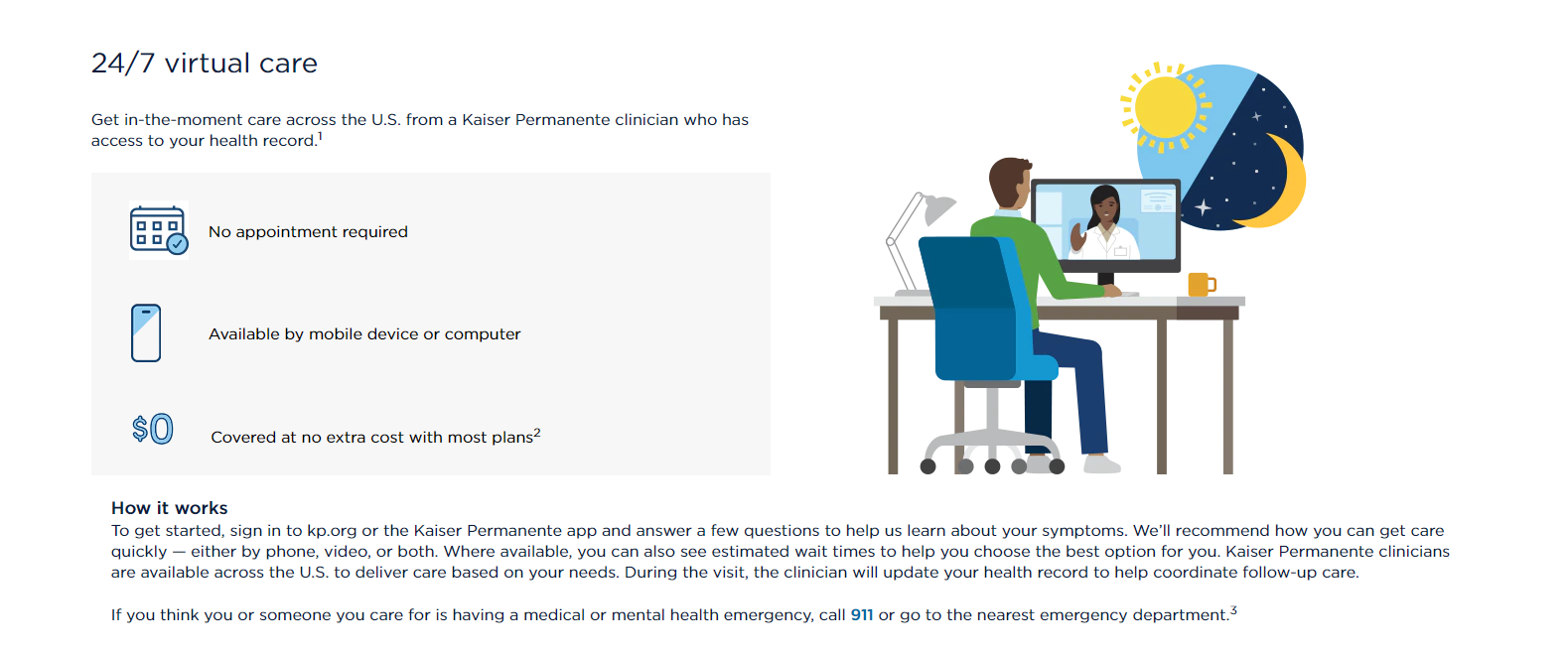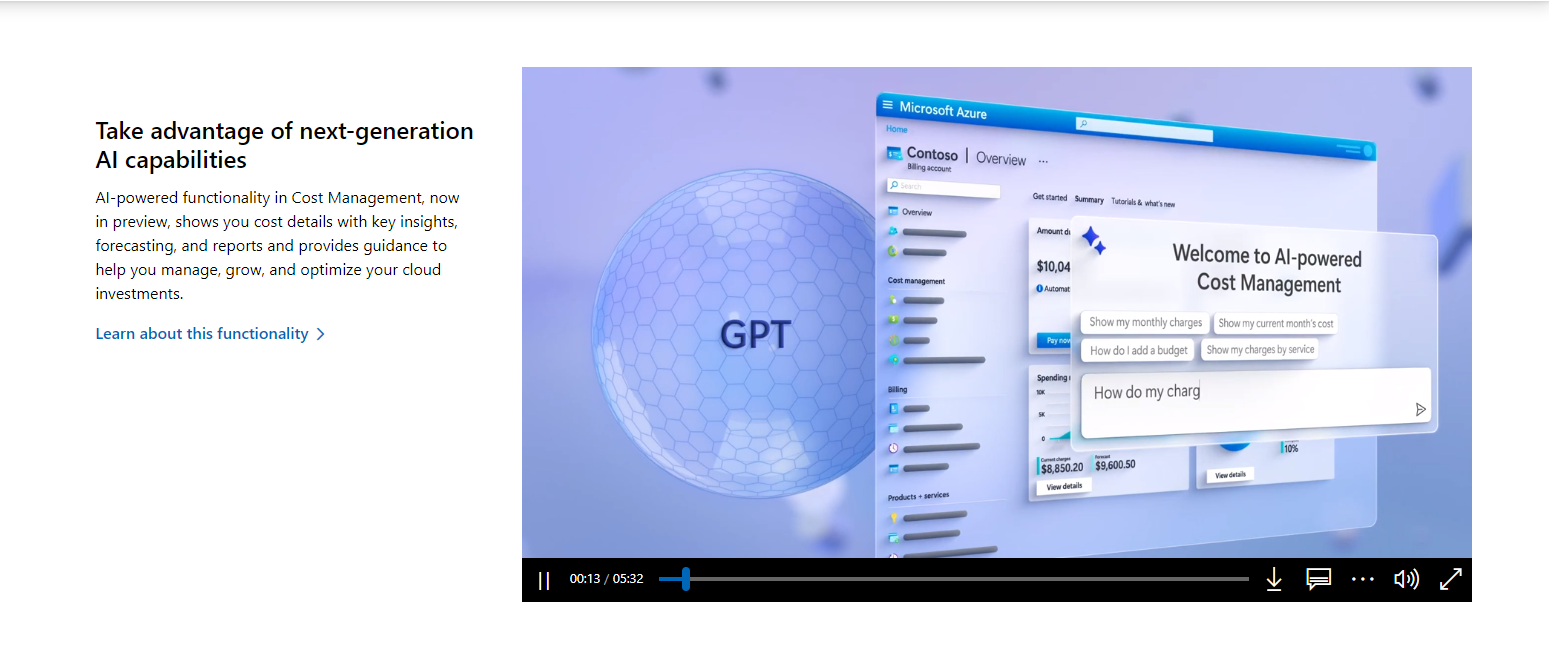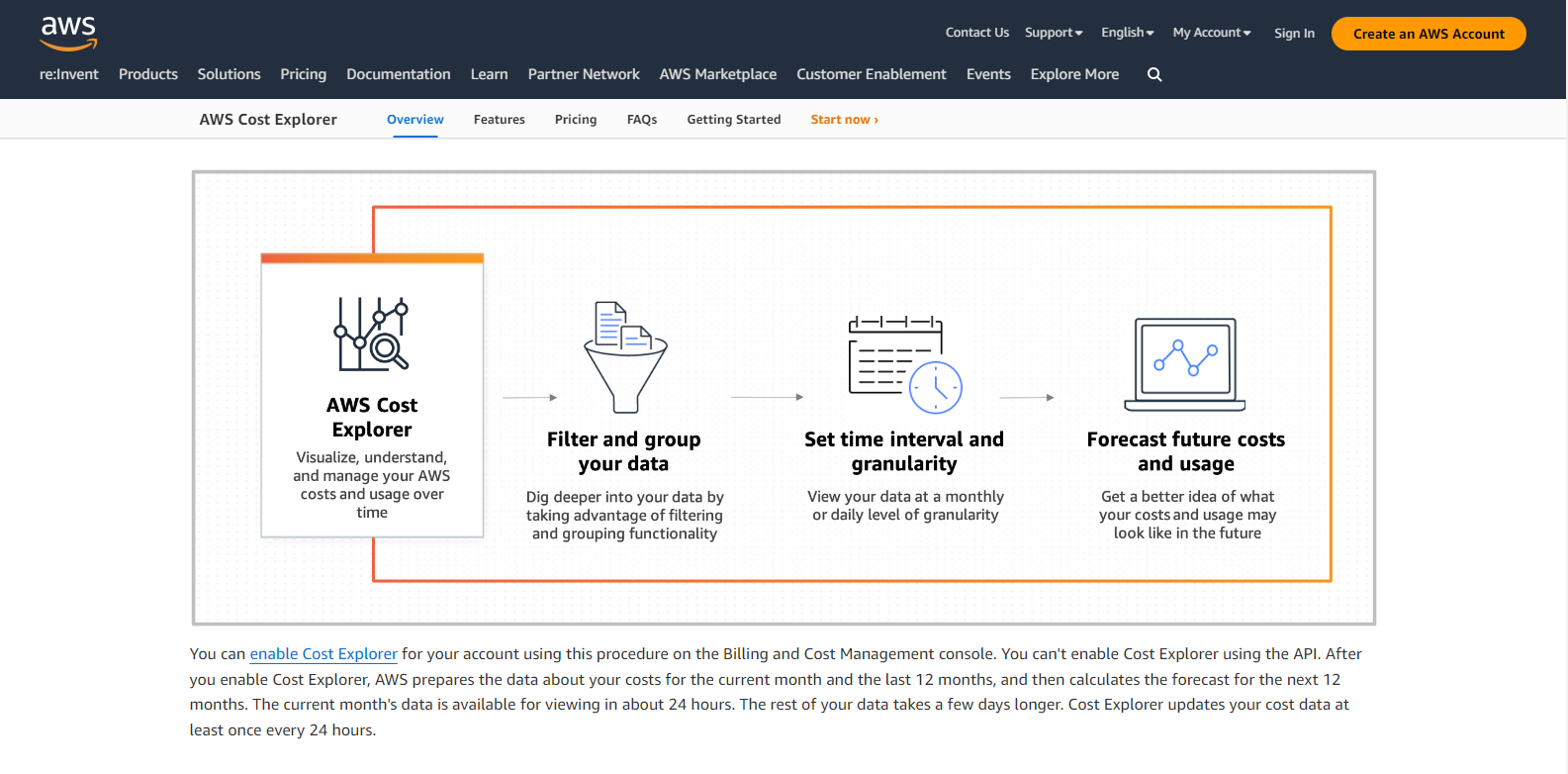Cloud Computing and Serverless Programming: A Journey Through Scalable Solutions
In this article, we will look into the world of cloud technologies, such as cloud computing and serverless programming.
5К открытий7К показов
The digital revolution has brought about the fast-paced world dominated by data. To compete in today’s rapidly changing digital environment, businesses must provide real-time services and manage massive amounts of data. This prompted a global rethinking of infrastructure approaches, resulting in the rise of game-changing cloud technologies. They are based on the concept of on-demand delivery of compute power, database, storage, applications, and other resources via an internet-based cloud services platform. In this article, we will look into the world of cloud technologies, such as cloud computing and serverless programming, and provide a comprehensive overview of their benefits, use-cases, and best practices.
Cloud Computing Platforms
Amazon Web Services (AWS)
Amazon Web Services (AWS) is the most comprehensive and widely used cloud platform in the world, with customers in over 190 countries. AWS, which works with over 5,000 educational institutions and 2,000 government organisations, accounts for more than half of the global public cloud share.
AWS offers more than 200 cloud services and products in industries such as computing, storage, databases, analytics, networking, mobile, developer tools, management tools, IoT, security, and enterprise applications. Below, we will describe the most popular of them.
Key Services and Features:
- Amazon EC2 (Elastic Compute Cloud) is a cloud platform that provides secure, web-scale cloud computing capacity, removing the need for businesses to invest in expensive physical services. It enables the creation of virtual machines while also managing other server features such as ports, security, and storage.
- Amazon RDS (Relational Database Service) provides simple database configuration, management, and scaling in the cloud. It enables the creation of database instances that support a variety of database engines such as SQL Server, SQL, PostgreSQL, and others.
- Amazon S3 (Simple Storage Service) provides storage with unparalleled scalability, data availability, security, and performance. It has intuitive management features that allow for frictionless data organisation and configurable access controls.
- Amazon Lambda is a serverless compute service that enables the execution of code without the ownership or management of servers. It automatically scales an application by running code in response to each trigger, with the developer only paying for the compute time consumed.
- Amazon CloudFront is a service designed to improve website speed and access to cloud-based data in order to efficiently deliver content to end users.
Real-World Case Study: Netflix
Netflix, one of the world’s leading streaming entertainment services with over 200 million subscribers in more than 190 countries, actively uses AWS services to ensure seamless content delivery to its vast audience and reach exceptional viewer experience.
In particular, it relies on AWS’s EC2 to scale its computing resources to meet a spike in demand in cases when millions of users simultaneously start streaming a newly released hit show or movie. Netflix also employs AWS CloudFront to deliver video content to its vast audience without latency. On top of that, .Netflix leverages AWS’s data analytics tools, to analyse viewer preferences and behaviour to personalise recommendations.
Microsoft Azure
Microsoft Azure is a cloud computing platform developed and operated by Microsoft. It includes over 200 products and cloud services designed to easily build, run, and manage applications across multiple clouds, using a variety of tools and frameworks. From DevOps to business analytics to the Internet of Things, Azure offers scalable, cost-effective solutions that bring together everything you need—related products, services, and third-party applications.
Key Services and Features:
- Azure Virtual Machines (VMs) enable the creation and use of fully customizable virtual machines in the cloud, providing the flexibility to run a variety of computing solutions. They can be used in a wide range of applications, from development and testing to large-scale applications.
- Azure Blob Storage is a service that provides scalable object storage for unstructured data as well as cloud-native workloads. Because of its high durability and scalability, it is essential for storing massive amounts of data and useful for applications such as data lakes, websites, mobile apps, and big data analytics.
- Azure Kubernetes Service (AKS) provides a managed Kubernetes environment that simplifies the deployment, management, and scaling of containerized applications. It streamlines container orchestration by automating complex tasks such as upgrades and scaling, and it integrates seamlessly with Azure’s continuous integration and continuous delivery (CI/CD) tools.
- Azure Functions is a serverless compute service that allows you to run small pieces of code, known as “functions,” in the cloud. It responds automatically to events in Azure or third-party services, making it ideal for developing event-driven applications.
- Azure Active Directory (AD) is a cloud-based identity and access management service that allows employees to sign in and access resources such as Microsoft Office 365 and the Azure portal. Its features include multi-factor authentication, device registration, self-service password management, and advanced security reports and alerts, which help an organisation protect against security threats while enabling new, flexible ways of working.
Real-World Case Study: Adobe
Adobe Creative Cloud is built on Microsoft Azure, and it serves millions of creative professionals worldwide by leveraging Azure Synapse Analytics for customer data management and analytics.
The integration with Azure Active Directory improves the security of Adobe products by allowing for efficient single sign-on experiences. Furthermore, Azure supports Adobe’s deployment of high-performance creative workflows on VDI, ensuring scalable, secure, and efficient operation.
Google Cloud Platform (GCP)
Google Cloud Platform (GCP) is the cloud computing platform used by Google to power all of the tech giant’s services and products, including Gmail and Google Search. Google, on the other hand, offers over 100 products and services under the GCP brand to millions of customers worldwide. The lineup includes a wide range of cloud services such as computing, storage, machine learning, and data analytics.
Key Services and Features
- Google Compute Engine provides highly customizable virtual machine instances, allowing compute resources to be tailored to specific workload requirements. It is well-known for its ability to quickly scale up or down, making it ideal for applications with variable demand.
- Google Cloud Storage provides long-term object storage and excels at storing large amounts of unstructured data. Its strengths are its global accessibility and high data consistency, which make it suitable for everything from serving website content to archiving large data sets.
- BigQuery is a fully managed, serverless data warehouse that can perform real-time analytics as well as large-scale data processing. It distinguishes itself by its ability to run SQL queries across petabytes of data quickly and easily, without the need for database administration.
- Google Kubernetes Engine (GKE) simplifies the deployment, management, and scaling of Kubernetes-based applications. GKE is well-known for its automated containerized application scaling and management, which ensures high availability and security.
- Google Cloud Platform’s AI and machine learning suite includes tools like TensorFlow for creating custom models, AutoML for automated model training, and AI Platform for easy deployment. They are intended for expert data scientists and developers who want to integrate AI into their applications, and they provide scalability, advanced model training capabilities, and seamless integration with other GCP services.
Real-World Case Study
Spotify, a global music streaming service with over 574 million users worldwide, manages its vast music library using Google Cloud Platform. For example, it manages its extensive user data and song metadata efficiently using GCP’s Bigtable, a high-performance NoSQL database service. It allows Spotify to quickly access and update information like user preferences, playlists, and song attributes, which is critical for improving the user experience.
Spotify also makes use of Google Cloud Platform’s Pub/Sub messaging system to orchestrate and manage communication among its various microservices. This system enables real-time data exchange and processing, allowing Spotify to effectively coordinate tasks such as playlist updates, user actions, and notification management across its global user base.
Serverless Programming: A Paradigm Shift
Serverless computing is a relatively new method of obtaining on-demand backend services, with servers provided by a serverless vendor. Users in this model only pay for the compute resources used during code execution, without having to manage servers or infrastructure.
Serverless commuting provides auto-scaling to handle varying workloads, lower operational overhead, faster application time to market, and cost efficiency because users are billed based on actual usage.
AWS, Microsoft Azure, and Google Cloud Functions, the three major cloud computing programmes we’ve discussed, all provide serverless computing platforms:
- AWS Lambda;
- Azure Functions;
- Google Cloud Services.
Serverless computing is a game-changing computing approach that provides specific benefits to developers and businesses:
- Capability to create scalable applications: Serverless architectures enable the creation of highly scalable applications that can automatically adapt to changing workloads. Netflix, for example, uses AWS Lambda to handle millions of concurrent video streams, ensuring a smooth viewing experience for its users while eliminating the need for manual infrastructure scaling.
- Cost-Effectiveness: Serverless computing can save companies and developers a lot of money because users are billed based on actual usage. Uber Eats, a food delivery service, uses Azure Functions for order processing and delivery coordination because its pay-as-you-go pricing reflects the erratic nature of food delivery demand.
- Scalability and Performance Metrics: Serverless platforms offer tools and services for monitoring and optimising application performance at scale. Airbnb, for example, manages reservations and guest interactions using Google Cloud Functions, leveraging its performance monitoring capabilities to ensure that the platform can handle high traffic during peak booking periods while effectively managing costs.
Case Studies: Real-World Applications
E-commerce: Scaling Sales with Serverless
Amazon, one of the world’s largest e-commerce platforms, relies on cloud computing to effectively manage its massive online retail operations. Using the benefits of AWS, the leading cloud platform, the online retail giant gains scalable infrastructure capable of handling traffic spikes during events such as Prime Day and Black Friday, ensuring a truly seamless shopping experience for millions of customers. Amazon builds a robust and scalable e-commerce architecture using all of the best AWS services, such as Amazon EC2 for web hosting, Amazon S3 for storage, and AWS Lambda for serverless functions.
B. Healthcare: Optimising Patient Care
Kaiser Permanente, one of the largest healthcare providers in the United States, has been actively incorporating Microsoft Azure’s cloud computing services into its operations to improve patient care and efficiency. Care teams, in particular, use Microsoft Azure solutions to collect and analyse data from medical devices in order to ensure data-driven decision making and personalised patient care. Azure also powers telemedicine services, allowing patients to access healthcare services from anywhere.
With Azure’s comprehensive set of cloud-based services, Kaiser Permanente is now capable of providing timely and personalised digital experiences to its massive patient base of 12.4 million patients, as well as equipping its medical personnel to make more informed decisions.
C. Gaming: Handling Traffic Spikes
Supercell, the developer of popular mobile games such as Clash of Clans, relies on cloud solutions to handle traffic spikes during game launches and updates. Supercell requires thousands of servers on a continuous basis because each player starting a game necessitates a session on the server side, and the number of servers must grow concurrently as more players join in.
Supercell’s entire game infrastructure is built on Amazon Web Services (AWS), with Amazon EC2 instances distributed across multiple Availability Zones to increase availability and Amazon S3 storing up to 10 terabytes of game event data per day. With the ability to scale server capacity based on player demand, they can efficiently handle traffic surges while minimising costs during quieter periods.
Challenges and Considerations
Security and Compliance
The protection of personal or sensitive data, such as personal information, financial information, or health records, is critical in cloud computing. In a serverless architecture, where the servers are managed by the cloud service provider, protecting this kind of data data becomes a difficult task. Compliance with regulations such as HIPAA (Health Insurance Portability and Accountability Act) or GDPR (General Data Protection Regulation) is required to fulfil it.
Following the security guidelines provided by cloud service providers, conducting regular security audits, and implementing strong identity and access management (IAM) controls are all critical data security measures. AWS, Azure, and Google Cloud each offer specific security guidelines and tools to assist in the security of cloud-based applications. Regular assessments of cloud infrastructure to identify and correct potential security vulnerabilities aid in the maintenance of a strong security posture. Using an IAM Controls framework to ensure that only authorised and authenticated users have access to specific data or applications.
Vendor Lock-In
Vendor lock-in occurs when a user loses the ability to switch to a different vendor due to high prices, effectively tying them to the original vendor. This situation has the potential to limit flexibility and increase reliance on a single cloud provider. Recognising the potential risks associated with vendor lock-in, such as difficulties in migrating applications and data to a different provider, is critical in business.
Organisations can reduce vendor lock-in risks by implementing cloud-agnostic technologies, containerization, and microservices architecture. These strategies make it easier to switch cloud providers if necessary, reducing the impact of vendor lock-in.
Cost Management
Analyzing serverless costs is essential for cost management and tools, such as AWS Cost Explorer or Azure Cost Management, help organizations track and understand their serverless spending.
To optimise serverless costs, organizations can implement resource cleanup practices, set up budget alerts to monitor spending, and regularly review usage patterns to rightsize resources and reduce unnecessary expenses. Cost optimization is crucial for maintaining a cost-effective serverless environment.
Future Trends in Cloud Computing and Serverless
Edge Computing and IoT
Edge computing is gaining popularity because it brings computation closer to the data source, reducing latency and enabling real-time processing. It is critical for IoT devices, autonomous vehicles, and remote monitoring.
Serverless computing is being extended to edge devices, allowing organisations to run lightweight serverless functions directly on edge devices, enhancing their ability to process and respond to data locally.
Machine Learning and AI Integration
Machine learning and AI are increasingly being integrated with cloud and serverless platforms. Cloud providers provide specialised services and frameworks that enable organisations to efficiently build and scale AI solutions.
AI and machine learning are being used in a variety of fields, from healthcare diagnostics to self-driving cars. Natural language processing and computer vision are two examples of AI-driven services that are transforming industries and spawning new applications.
Hybrid Cloud and Multi-Cloud Strategies
Hybrid cloud environments, which combine on-premises infrastructure with public and private cloud resources, are becoming more common. They are adaptable, allowing data and workloads to move seamlessly between environments.
Multi-cloud strategies employ multiple cloud providers for various purposes, providing redundancy and flexibility. Multi-cloud deployments are expected to play a significant role in the future of cloud computing as organisations seek to avoid vendor lock-in and optimise performance.
Conclusion
The rise of cloud computing is reshaping the digital world, creating new opportunities for scalable and cost-effective development cycles, allowing organisations to scale easily while focusing on code rather than infrastructure management. Major multinational corporations such as Amazon Web Services, Microsoft Azure, and Google Cloud Platform provide hundreds of cloud services and products that transform virtually every industry, from e-commerce to healthcare and gaming. Despite some potential security concerns in serverless architectures, these technologies have a promising future.
Cloud computing is rapidly evolving, with new technologies and services appearing on a regular basis. Staying up to date on industry trends and best practices is critical for businesses looking to maximise the cloud’s potential. As serverless computing matures, it will most likely play a larger role in shaping the future of cloud computing.
Additional Resources
Here is a list of essential materials to read if you want to learn more about serverless computing:
Books:
5К открытий7К показов











